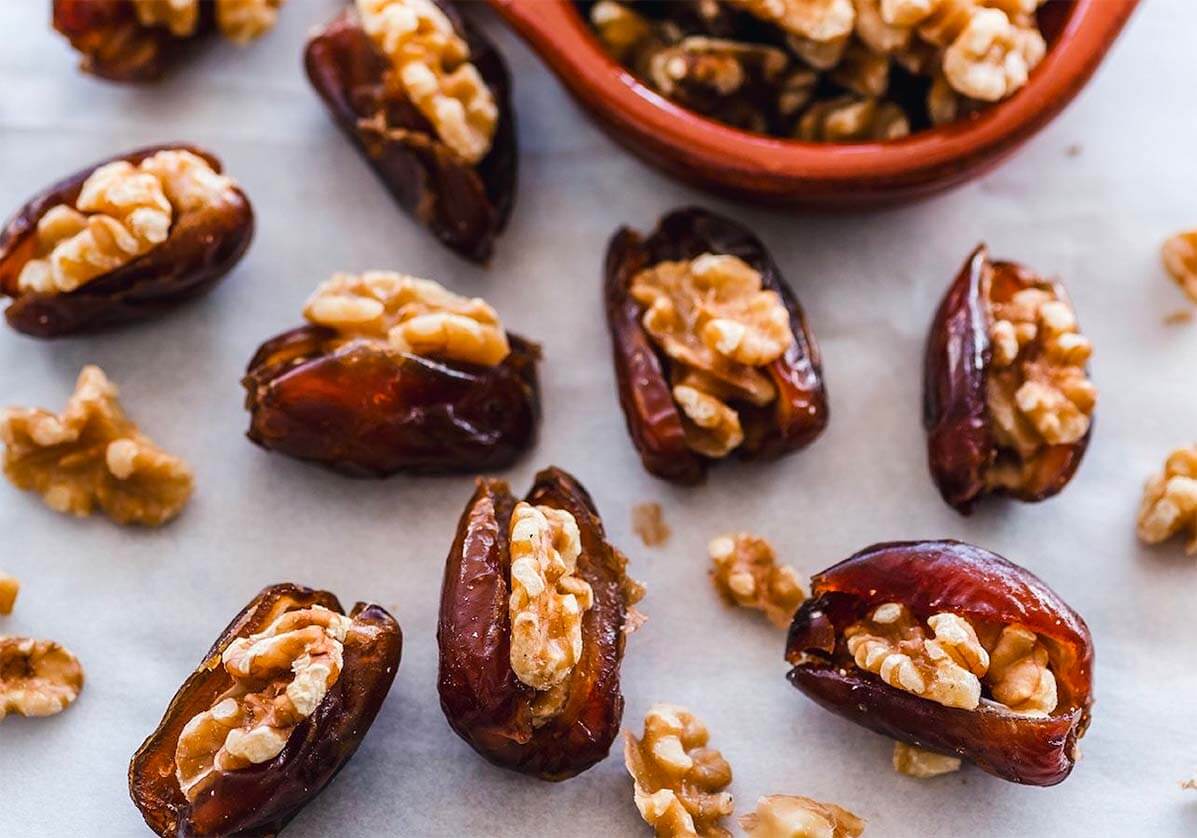What would happen if I eat dry dates daily?
Dry dates are a great healthy sweet since they provide the body with some nutrients that need to be taken
Boost your daily activity by consuming a date every morning. It is a perfect way to keep your body healthy.

Boost your daily activity by consuming a date every morning. It is a perfect way to keep your body healthy.
Dry dates are a great healthy sweet since they provide the body with some nutrients that need to be taken
Discover the best foods to lower your cholesterol levels, backed by scientific evidence. Learn about the different types of cholesterol,
Vitamin C is essential for a long and healthy life. Here is a high vitamin C foods list, so you
Vitamin C is essential for a long and healthy life. Here is a high vitamin C foods list, so you
Dates are sweet and healthy fruits. You can use them instead of sugar in many recipes. Find out how to
Learn how to create a healthy and balanced diet plan for kids, with tips and tricks for picky eaters, kids
Dates stuffed with cream cheese are a sweet, creamy, and nutty snack or appetizer that's easy to make and perfect
Are dates keto? Learn about the carbohydrates and sugar content of dates. How to incorporate them into a keto diet,
Learn what healthy carbs are and how to choose the best sources of carbohydrates for your diet.
Subscribe to our newsletter to be notified and keep up to date
The nutrients in dates can contribute to bettering your health. Dates can also help when you are trying to lose
Dates are sweet dried fruit with several health benefits. Scientifically, the effect of eating an odd or even number of
Dates are superfoods that have a lot of nutrients and minerals. Dates are high in antioxidants and fiber and are
Labor and delivery are an exciting part of pregnancy and can be anxiety-producing for pregnant women as many factors contribute
Kidneys are responsible for filtering your blood and other waste products. Vegetables and fruits like dates are foods good for
DIET DESCRIPTION: Gout is the most common painful form of inflammatory arthritis. It occurs when there is high uric acid
Inflammation is the natural process that occurs in your body when there is an infection, illness, or injury, but it
Are Dates Good for Pre-Workout? Do Dates as Pre-Workout and Post-Workout Snacks Help You Build Muscle? What are the Benefits of
Join our journey to true wellness by signing up to our newsletter
Get access to the latest health trends. They include exciting features verified by experts. By subscribing you agree to the Terms of Use and Privacy Policy.
© 2023 7D VARIETY. All rights reserved.
| Cookie | Duration | Description |
|---|---|---|
| cookielawinfo-checkbox-analytics | 11 months | This cookie is set by GDPR Cookie Consent plugin. The cookie is used to store the user consent for the cookies in the category "Analytics". |
| cookielawinfo-checkbox-functional | 11 months | The cookie is set by GDPR cookie consent to record the user consent for the cookies in the category "Functional". |
| cookielawinfo-checkbox-necessary | 11 months | This cookie is set by GDPR Cookie Consent plugin. The cookies is used to store the user consent for the cookies in the category "Necessary". |
| cookielawinfo-checkbox-others | 11 months | This cookie is set by GDPR Cookie Consent plugin. The cookie is used to store the user consent for the cookies in the category "Other. |
| cookielawinfo-checkbox-performance | 11 months | This cookie is set by GDPR Cookie Consent plugin. The cookie is used to store the user consent for the cookies in the category "Performance". |
| viewed_cookie_policy | 11 months | The cookie is set by the GDPR Cookie Consent plugin and is used to store whether or not user has consented to the use of cookies. It does not store any personal data. |
Welcome to 7D VARIETY! We are delighted that you have decided to join our passionate community of writers. By agreeing to become a part of our community, you acknowledge and accept the following terms and conditions:
By submitting this form, you signify your understanding and agreement to these terms and conditions.
